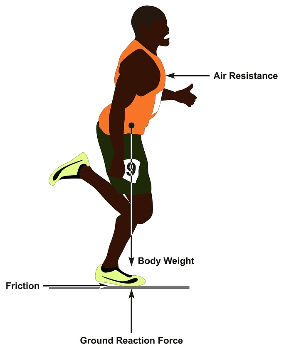Let’s say you’re a runner, because the person who inspired this blog is, and this is her story. I’ll call her Kate, although it’s not her real name. In a nutshell, Kate took a week off of running, then she went back to it at the same intensity and duration as before. The result: she suffered knee pain. Why? Read on for the answer.
 Kate is a seasoned runner who generally strides the trails three times a week. Recently, she had an unexpected week off of work due to a fire that threatened her home. (All is fine now.) instead of taking it easy, though, she was quite active during her week away from work. She planted her garden, walked or hiked her dogs every day, did house chores, cooked fun new meals, and more. However, she did not run.
Kate is a seasoned runner who generally strides the trails three times a week. Recently, she had an unexpected week off of work due to a fire that threatened her home. (All is fine now.) instead of taking it easy, though, she was quite active during her week away from work. She planted her garden, walked or hiked her dogs every day, did house chores, cooked fun new meals, and more. However, she did not run.
Further, since she didn’t run, she spent more time doing other movements that her body was not accustomed to doing regularly, like shoveling, squatting, kneeling for hours to weed and plant, bending over the kitchen counter, etc. Although she was active and moving her body, much more than usual even, the demands of the activities were quite different from her running workouts. And, as she soon found out, all movement is not the same!
Your Body is Dynamic
How we use our bodies impacts its position through changes in soft tissue length and tension. While working, Kate is generally sitting most of the day. However, during her week off work, she was up and about doing stuff, lots of stuff. And her body noticed and responded. Doing the various activities mentioned above used different muscles and potentially changed her body’s alignment. In fact, all this new activity would alter the muscles through tightening, shortening, lengthening, or loosening. These tissue changes could then alter the posture of her pelvis, spine, knees, and ankles, all of which are also heavily used while running. Jumping back into the running game, as she put it, without considering these factors set her up for potential pain and injury.
Respect Your Sport
 Kate runs regularly. Therefore, her body is accustomed to the movement. When you do a sport several times a week, you often take for granted the demands of the activity. It is second nature to you, and your body is well trained in that sport. But think back to when you first started! Quite a different experience, right?
Kate runs regularly. Therefore, her body is accustomed to the movement. When you do a sport several times a week, you often take for granted the demands of the activity. It is second nature to you, and your body is well trained in that sport. But think back to when you first started! Quite a different experience, right?
Running requires a complex series of integrated movement that exerts high forces (up to five times your body weight) through your joints. Because Kate is a recreational runner who puts in moderate efforts, she doesn’t consider her workouts that demanding. On the contrary, her body does. And her knee simply reminded her of that. Pain is the body’s language. It was trying to protect Kate. Her knee was telling her to back off.
Decrease by 10%, or More
The standard recommendation for progression is a 10% increase per week. Likewise, I encourage a minimum 10% decrease in the intensity, duration, and frequency of your workouts for each week you are off. In addition, the first time out after a break should be very gentle. For instance, a quick and easy run just to loosen up and check in with the body would have been most appropriate for Kate. As she said after she hurt her knee, “Take it slow, dummy!”
Summary
Summer brings warmer temperatures and more outdoor activities. As you enjoy these warm-weather sports and hobbies, consider your body and remember Kate’s story. Recall the points discussed here. Your body is dynamic and posturally adapts to the activities you are doing. Respect your sport: the demands haven’t changed, but your body may have. Finally, decrease your workouts following a break.
Enjoy an active and pain free summer!



